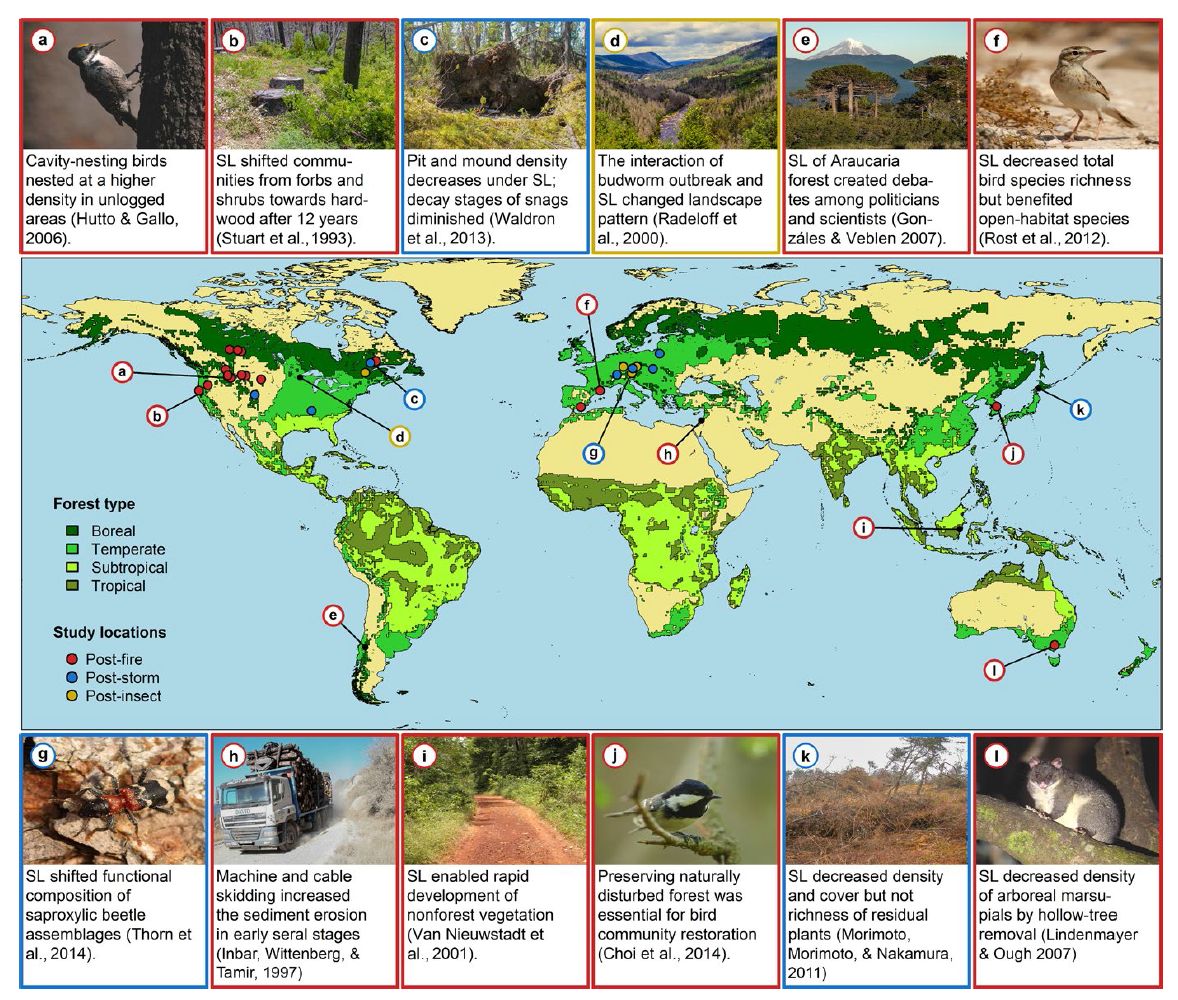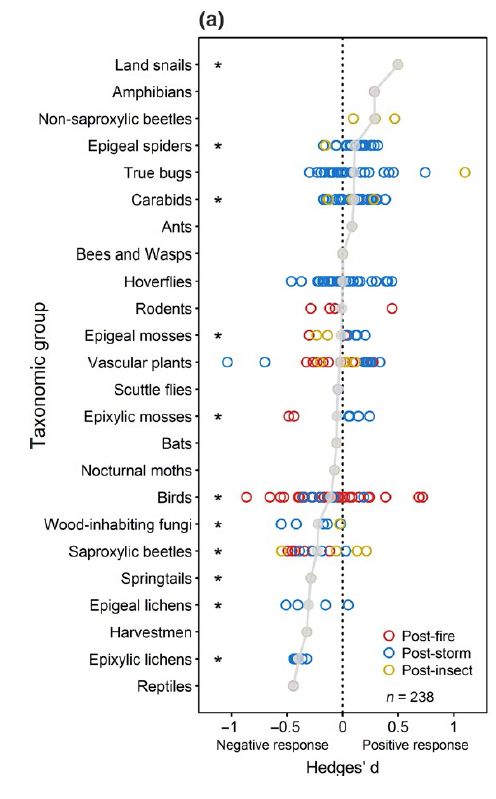How does salvage logging after disturbance affect biodiversity?
A global meta-analysis assessed how salvage logging after disturbance influences 24 species groups of eight different taxonomic groups. The results were published in the Journal of Applied Ecology.

Salvage logging is a common management response to natural disturbances in managed forests throughout the world. It aims to recover some of the economic losses from disturbance, and can also be beneficial to follow-up management activities such as planting. However, salvage logging is also an important disruption of the post-disturbance system, as it removes the high amounts of deadwood that are typical for recently disturbed forests from the site. In a global meta-analysis we thus investigated the effect of salvage logging on biodiversity for 24 species groups across eight different taxonomic groups.

Based on our global meta-analysis we found both positive and negative effects of salvage harvesting. The species richness of dead wood-dependent taxa (i.e. saproxylic organisms) decreased more strongly than richness of non-saproxylic taxa. In contrast, taxonomic groups typically associated with open habitats increased in species number after salvage logging. Furthermore, our analyses also show that not only the species richness but also the assemblages of species can be altered by salvage logging. We thus suggest that a minimum amount of deadwood should be retained in post-disturbance management in order to provide a lifeboat function for particularly sensitive saproxylic species. For more details see here.